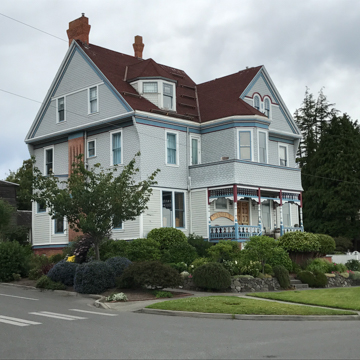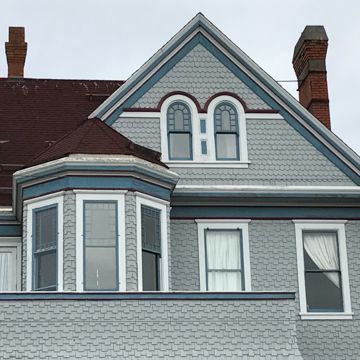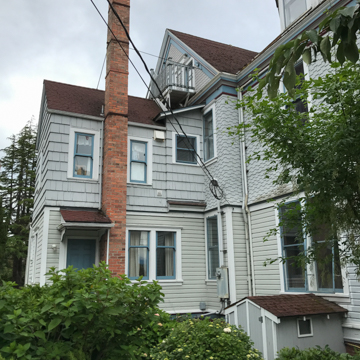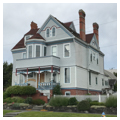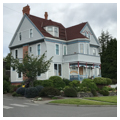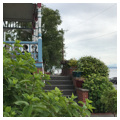Surveying Port Townsend Bay from a prominent spot on the bluff, the four-chimneyed, three-story Francis Wilcox James House is among the more spectacular of the many Victorian residences that represent this port city’s nineteenth-century prosperity. The house was under construction in the late 1880s at the same time as the massive U.S. Customs House and Post Office across the street to the southwest.
James intentionally had his house built on a bluff so he could oversee shipping in the bay, although he may also have taken an interest in the customs work next door: an English immigrant, James moved to Port Townsend in 1853 and became head inspector for the customs office. He eventually opened a mercantile business and retired in 1882, allegedly amassing a fortune from converting gold into paper currency and then by reinvesting in United States bonds. The construction of the house cost $10,000—a substantial sum at the time, but likely not a major amount for James.
The house is characterized not only by its attenuated, multiple chimneys but also its bay windows and different types of shingle patterns on the exterior, with fish-scale shingles on the first story and overlapping rectangular shingles on the second story. The asymmetrical exterior includes rectangular and arched windows, and a wide, open porch with decorative spindle work below a balcony. Currently, the lower half of the house has horizontal plank siding that previously was cedar shingle. The house sits on a brick foundation, and the brick chimney on the house’s southwest side is exposed below the gable. The entrance hall includes inlaid parquet floors of oak, wild cherry, and walnut. The wild cherry was brought from Virginia and all the carving of banisters, spindles, and newel posts was completed on site.
At the time of his death in 1920, James had one of the largest estates in Jefferson County. The house served as a bed-and-breakfast for a time, but is once again privately owned.


